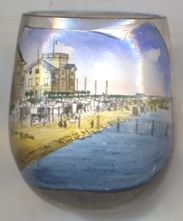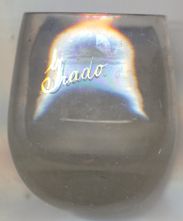

|
| ITALIA | ITALY |
| regione: Friuli - Venezia Giulia | |
| provincia: Udine |
 Grado is situated on an island off the northern shore of the Adriatic Sea at the eastern end of the Gulf of
Venice, about 45 km north-northwest of the provincial capital Udine and about 20 km
west-northwest of the regional capital Trieste. The municipality has a population of about 7,800 (2022).
Grado is situated on an island off the northern shore of the Adriatic Sea at the eastern end of the Gulf of
Venice, about 45 km north-northwest of the provincial capital Udine and about 20 km
west-northwest of the regional capital Trieste. The municipality has a population of about 7,800 (2022).
The Romans used Grado (Gradus) as a port for their garrison at Aquileia. When the Huns, led by Attila, invaded the area in 452 AD, the archbishop and the population of Aquileia took refuge on the island. During the following centuries, Aquileia and Grado became rival towns. Between 727 and 827 AD, the patriarchade of Grado was officially recognized by the Roman church. In 1545, a papal decision transferred the seat of the diocese to Castello, which became the seat of the archbishops and patriarchs of Venice. After that, Grado lost its importance and remained a small fishing village. After the end of the Venetian Republic and a short period of French rule, Grado became part of Austria following the Treaty of Campoformido in 1797. At the end of the 19th century, the medical use of the sand made Grado a fashionable summer resort of the Austrian Monarchy's upper and middle class. Until the end of World War I, the municipality was part of the County of Görz and Gradisca, and was subject to the judicial district of Cervignano, which in turn was part of the district of Monfalcone. In 1918, Grado became part of Italy. Today, Grado is again one of the most popular sea-side resorts of the northern Adriatic. The province of Grado was merged into the province of Udine in 2017.
The  Basilica Sant' Eufemia [background right] was consecrated in 579 AD
Treasures of the church are the ancient floor mosaics of the 6th century and the pulpit, supported by six slender columns.
Due to the suppression of the Grado patriarchate by the Venetians it lost the title of cathedral in 1451. The bell tower was built
in 1455, possibly as a compensation for the lost status. The church was thoroughly renovated between 1939 and 1951, restoring the
original ancient features of the church. Since time immemorial, the church has the status of a Basilica minor (see
list of other basilicae minores depicted on glasses of this collection).
Basilica Sant' Eufemia [background right] was consecrated in 579 AD
Treasures of the church are the ancient floor mosaics of the 6th century and the pulpit, supported by six slender columns.
Due to the suppression of the Grado patriarchate by the Venetians it lost the title of cathedral in 1451. The bell tower was built
in 1455, possibly as a compensation for the lost status. The church was thoroughly renovated between 1939 and 1951, restoring the
original ancient features of the church. Since time immemorial, the church has the status of a Basilica minor (see
list of other basilicae minores depicted on glasses of this collection).


Construction of the  Ville Bianchi ( the 'White Villas') [near left, no. 4741] was
initiated in 1900 by Leonhard Bianchi. With Grado's rise as a preferred summer resort during the Austro-Hungarian monarchy, the villas
also established themselves as exclusive holiday homes. Despite considerable damages during World War II, operations resumed after
a short renovation. In 1958, the villas were modernized and run as a 2-star guesthouse. In 1978, the Grigolon family took over the
management of the "Ville Bianchi". As part of a comprehensive renovation in 2000, the the five villas were be adapted to contemporary
standards.
Ville Bianchi ( the 'White Villas') [near left, no. 4741] was
initiated in 1900 by Leonhard Bianchi. With Grado's rise as a preferred summer resort during the Austro-Hungarian monarchy, the villas
also established themselves as exclusive holiday homes. Despite considerable damages during World War II, operations resumed after
a short renovation. In 1958, the villas were modernized and run as a 2-star guesthouse. In 1978, the Grigolon family took over the
management of the "Ville Bianchi". As part of a comprehensive renovation in 2000, the the five villas were be adapted to contemporary
standards.
[https://de.wikipedia.org/wiki/Grado_(Friaul-Julisch_Venetien), https://en.wikipedia.org/wiki/Grado,_Friuli_Venezia_Giulia;
https://en.wikipedia.org/wiki/Basilica_of_Sant%27Eufemia,_Grado, https://gcatholic.org/churches/italy/0077.htm;
https://de.villebianchi.com/ville-bianchi-die-geschichte/]
![[scale]](lineal.jpg)